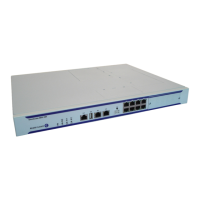Virtual Leased Line Services
7750 SR OS Services Guide Page 141
T-LDP Status Notification Handling Rules
Referring to Figure 27 on page 137 as a reference, the following are the rules for generating,
processing, and merging T-LDP status notifications in VLL service with endpoints. Note that any
allowed combination of objects as specified in Redundant VLL Service Model on page 137 can be
used on endpoints “X” and “Y”. The following sections refer to the specific combination objects
in Figure 27 as an example to describe the more general rules.
Processing Endpoint SAP Active/Standby Status Bits
The advertised admin forwarding status of active/standby reflects the status of the local LAG SAP
in MC-LAG application. If the SAP is not part of a MC-LAG instance, the forwarding status of
active is always advertised.
When the SAP in endpoint “X” is part of a MC-LAG instance, a node must send T-LDP
forwarding status bit of “SAP active/standby” over all “Y” endpoint spoke SDPs, except the ICB
spoke SDP, whenever this status changes. The status bit sent over the ICB is always zero (active
by default).
When the SAP in endpoint “X” is not part of a MC-LAG instance, then the forwarding status sent
over all “Y” endpoint spoke SDP's should always be set to zero (active by default).
The received SAP active/standby status is saved and used for selecting the active transmit
endpoint object as per the pseudo-code in VLL Endpoint Active Transmit Object Selection Rules
on page 139.
Processing and Merging Local and Received Endpoint Object Up/Down
Operational Status
Endpoint “X” is operationally up if at least one of its objects is operationally up. It is down if all its
objects are operationally down.
If the SAP in endpoint “X” transitions locally to the down state, or received a SAP down
notification via SAP specific OAM signal, the node must send T-LDP SAP down status bits on the
“Y” endpoint ICB spoke SDP only. Note that Ethernet SAP does not support SAP OAM protocol.
All other SAP types cannot exist on the same endpoint as an ICB spoke SDP since non Ethernet
SAP cannot be part of a MC-LAG instance.
If the ICB spoke SDP in endpoint “X” transitions locally to down state, the node must send T-LDP
SDP-binding down status bits on this spoke SDP.
If the ICB spoke SDP in endpoint “X” received T-LDP SDP-binding down status bits or
pseudowire not forwarding status bits, the node saves this status and takes no further action. The
saved status is used for selecting the active transmit endpoint object.

